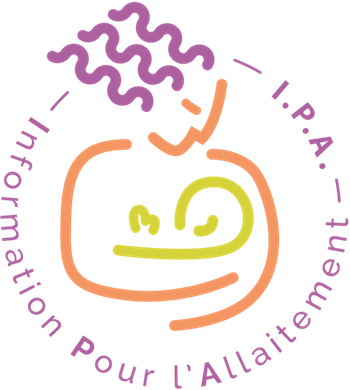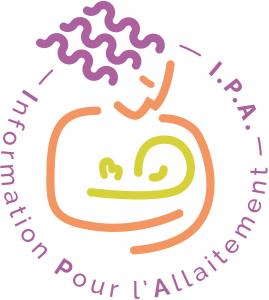Catégories
Documents disponibles dans cette catégorie (230)
Article : texte imprimé
Wenyi Qin, Auteur ; Santanu Dasgupta, Auteur ; Nitai Mukhopadhyay, Auteur |Background: Women diagnosed with pregnancy-associated breast cancer postpartum have a worse prognosis, stage for stage, than other women with breast cancer. The time of breast involution is tumor promotional. The extracellular matrix protein ten[...]Article : texte imprimé
Sara García-Ravelo, Auteur ; Nieves Marta Díaz-Gómez, Auteur ; María Virginia Martín, Auteur |Background: Maternal obesity is known to affect human milk composition. Long-chain polyunsaturated fatty acids (LCPUFA) are vital nutrients to the nervous system development and precursors of eicosanoids related to obesity (prostaglandin E2-PGE2[...]texte imprimé
Faut-il allaiter son enfant ? À l'époque du lait en poudre, cette fonction, que nous partageons avec tous les mammifères, est-elle désuète ? Ou bien, au contraire, le biberon n'est-il qu'un pis-aller ? Quels bienfaits le nourrisson retire-t-il d[...]Article : texte imprimé
Christina Galloway, Auteur ; Janet Howells, Auteur |The increasing survival of preterm infants brings difficulties in achieving the best growth rates for them while in neonatal intensive care units (NICU5). This paper describes an innovative approach of using breastmilk to maximise a preterm infa[...]Article : texte imprimé
Alan G. Lourenço, Auteur ; Marilena C. Komesu, Auteur ; Geraldo Duarte, Auteur |Background: Chemokine C-C motif ligand 20 (CCL20) is implicated in the formation and function of mucosal lymphoid tissues. Although CCL20 is secreted by many normal human tissues, no studies have evaluated the presence of CCL20 in human milk or [...]Article : texte imprimé
Laurence Mangel, Auteur ; Amit Ovental, Auteur ; Neta Batscha, Auteur |Objective: This study aimed to evaluate the effect of milk expression method (manual expression versus electric pump) on the composition of breastmilk. Study Design: Data on 21 mothers of 21 newborns 48–72 hours postdelivery were collected an[...]Article : texte imprimé
Brian D.W. Chow, Auteur ; Juliann L. Reardon, Auteur ; Emily O. Perry, Auteur |Background: Colonization increases risk for invasive candidiasis in neonates. Breast milk host defense proteins may affect yeast colonization of infants. Objective: This study aimed to evaluate breast milk host defense proteins relative to [...]Article : texte imprimé
Chiara Peila, Auteur ; Alessandra Coscia, Auteur ; Enrico Bertino, Auteur ; Giovanni Li Volti, Auteur ; Fabio Galvano, Auteur ; Ignazio Barbagallo, Auteur ; Diego Gazzolo, Auteur |Introduction: Under some circumstances human milk (HM) extraction and refrigerated storage may be necessary. Depending on the length and on the type of cold storage, milk may lose some important properties, but current advices on safe HM storage[...]Article : texte imprimé
Wenyi Qin, Auteur ; Santanu Dasgupta, Auteur ; John Corradi, Auteur |Background: Pregnancy-associated breast cancers (PABCs), especially those diagnosed after childbirth, are often aggressive, with a poor prognosis. Factors influencing PABC are largely unknown. Micro(mi)RNAs are present in many human body fluids [...]Article : texte imprimé
Early infancy is a critical period for brain development (Fig. 1).1,2 Early life exposures, including nutrition, can have lasting effects on the structure and function of the developing brain. The preterm infant is particularly vulnerable to eff[...]Article : texte imprimé
Hannah G. Juncker, Auteur ; M. Romijn, Auteur ; Veerle N. Loth, Auteur |Background Human milk contains antibodies against Severe Acute Respiratory Syndrome Coronavirus 2 (SARS-CoV-2) following Coronavirus Disease 2019 (COVID-19). These antibodies may serve as protection against COVID-19 in infants. However, the evo[...]Nouveauté
Article : texte imprimé
Thaneswari Juvarajah, Auteur ; Wan Izlina Wan-Ibrahim, Auteur ; Ali Ashrafzadeh, Auteur |Background: Bioactive proteins from milk fat globule membrane (MFGM) play extensive roles in cellular processes and defense mechanisms in infants. The aims of this study were to identify differences in protein compositions in human and caprine M[...]Article : texte imprimé
Bo Liu, Auteur ; David S. Newburg, Auteur |Breastfeeding protects the neonate against pathogen infection. Major mechanisms of protection include human milk glycoconjugates functioning as soluble receptor mimetics that inhibit pathogen binding to the mucosal cell surface, prebiotic stimul[...]Article : texte imprimé
Ronit Lubetzky, Auteur ; Orna Sever, Auteur ; Françis B. Mimouni, Auteur |Background: Little is known about the effect of advanced maternal age upon macronutrients of human milk. This study was designed to study contents of macronutrients (fat, lactose, and protein) in human milk collected in the first 2 weeks of life[...]Article : texte imprimé
Carolin Marx, Auteur ; Renee Bridge, Auteur ; Alison K. Wolf, Auteur |Background: Human milk oligosaccharides (HMO) represent the third most abundant component of human breast milk. More than a hundred structurally distinct HMO have been identified, and the HMO composition varies between mothers as well as over t[...]Article : texte imprimé
Lars Bode, Auteur |Human milk oligosaccharides (HMOs) are a family of structurally diverse, complex sugars abundant in breast milk.1 HMO concentrations in human milk often exceed the concentration of all human milk proteins combined (Table 1). HMO profiles can var[...]Article : texte imprimé
Beyond its nutritional value, human milk is also involved in a complex host–microbe interaction by promoting the colonization of a healthy gut microbiota in the infant. The initial gut microbiome can be influenced by a variety of factors, such a[...]texte imprimé
The first of its kind, The Immunobiology of Human Milk by Dr. Lars Hanson provides a thorough and unique understanding of the wondrous biology of the immune components in human milk and how they protect the breastfed infant. In this book, Dr. H[...]Article : texte imprimé
Mother's own human milk is the best nutrition for infants, especially preterm very-low-birth-weight (VLBW) (≤1,500 g) infants, because of its immune-modulatory constituents that strengthen the infant's host defense, provide protectio[...]Article : texte imprimé
Sara Vázquez-Román, Auteur ; Diana Escuder-Vieco, Auteur ; Nadia Raquel García-Lara, Auteur |Objective: Although under certain circumstances it is necessary to express milk, there are not many recommendations about the ideal storage conditions for human milk. The objectives of this study were to analyze the effects on Dornic acidity of [...]Article : texte imprimé
Gili Palnizky Soffer, Auteur ; Maayan Siri, Auteur ; Laurence Mangel, Auteur ; Dror Mandel, Auteur ; Ronit Lubetzky, Auteur |Objective: The impact of maternal anxiety on the macronutrients content of human milk (HM) is unknown. We hypothesized that maternal stress generated by her infant‘s hospitalization will affect the mother's breast milk's macronutrients content. [...]Article : texte imprimé
Shikha Pundir, Auteur ; Cameron J. Mitchell, Auteur ; Eric B. Thorstensen, Auteur |Background: Preterm birth is a stressful event for both the mother and infant. Whereas the initiation of breastfeeding is important for preterm infant health, little is known of the glucocorticoid hormones (cortisol and cortisone) in human milk[...]Article : texte imprimé
This month's issue of Breastfeeding Medicine highlights a seemingly “minor” finding of lowered protein and fat content in the colostrum milk of Syrian refugee mothers as compared with the content of the colostrum of the local Turkish mothers. As[...]Article : texte imprimé
Laurence Collin-Lévesque, Auteur ; Yosra El-Ghaddaf, Auteur ; Madeleine Genest, Auteur |Background: Duloxetine and methylphenidate are commonly prescribed for the management of depression and attention-deficit/hyperactivity disorder (ADHD), respectively. However, little information is available concerning their safety during lactat[...]Article : texte imprimé
Virginia A. Aparicio, Auteur ; Olga Ocón, Auteur ; Javier Diaz-Castro, Auteur |Background: Although exercise reduces systemic inflammation, information regarding its influence on human milk is scarce or inexistent. Research Aim: The aim of this study was to investigate the influence of an exercise intervention during [...]Article : texte imprimé
MD Cregan, Auteur ; TR De Mello, Auteur ; D Kershaw, Auteur |BACKGROUND: Lactogenesis II describes the onset of copious milk secretion, and the success of lactogenesis II has been determined in women by measuring the changes in the composition of mammary secretion in the immediate postpartum period. AIM A[...]Article : texte imprimé
Elisabeth Stoltz Sjöström, Auteur ; Inger Öhman, Auteur ; Andreas Tornevi, Auteur |Background: Human milk (HM) is the preferred basis of nutrition for infants, including those born prematurely. Information on HM macronutrient content is necessary to optimize nutritional support of preterm infants. Objectives: This study a[...]Article : document cartographique imprimé
Adem Polat, Auteur ; Turan Tunc, Auteur ; Galip Erdem, Auteur |In addition to its nutritional benefits, human milk also has bioactive elements. Limited immunological functions of newborns are supported and altered by the immunological elements of mother milk. Chemokines are of importance among these immune [...]Article : texte imprimé
Winston Sheen, Auteur ; Mohamed Ahmed, Auteur ; Hardik Patel, Auteur |Background: In the neonatal intensive care unit (NICU) expressed mothers' milk usually is stored frozen until used. We found that when human milk was stored at −20°C for up to 9 months there were reduced bacterial counts and pH, increased [...]Article : texte imprimé
Magdalena Orczyk-Pawilowicz, Auteur ; Lidia Hirnle, Auteur ; Marta Berghausen-Mazur, Auteur |Background: Because terminal sugars of α-1-acid glycoprotein (AGP) are reported to be involved in anti-inflammatory and immunomodulatory processes, their expressions might have an influence on the proper function of immune system of newborn[...]Article : texte imprimé
José A. Maldonado-Lobon, Auteur ; Miguel A. Díaz-López, Auteur ; Raffaele Carputo, Auteur |Introduction: Recent results indicate that human mastitis and painful breastfeeding may be characterized by a mammary bacterial dysbiosis, a process in which the population of potential pathogens increases at the expense of the normal mammary mi[...]Article : texte imprimé
Jacqueline María Valverde-Villegas, Auteur ; Mélusine Durand, Auteur |Background Stem/progenitor cells have been identified in human milk. However, characterization and percentages of cell subsets in human milk using hematopoietic stem and progenitor cell markers according to the differential expression of CD45, [...]Article : texte imprimé
Mojtaba Keikha, Auteur ; Maryam Bahreynian, Auteur ; Mohammad Saleki, Auteur |Background: This study aims at systematically reviewing the observational and interventional studies on the association of maternal macro- and micronutrient intake with breast milk content. Methods: We systematically searched the Medline via [...]Article : texte imprimé
Background A primary role of human donor milk banks is to provide pasteurized human milk for the sick and preterm infant populations and to support the mothers of these infants as they establish their own milk supply. The results of human milk [...]Article : texte imprimé
Mourh Jasminder, Auteur ; Hilary Rowe, Auteur |With recent legalization of marijuana in numerous U.S. states, the risk of marijuana exposure via breast milk is a rising concern. This review analyzes the available human and animal literature regarding maternal use of marijuana during lactatio[...]Article : texte imprimé
Leah C. Hibel, Auteur ; Hillary Schiltz, Auteur |Background: Salivary secretory immunoglobulin A (sIgA) concentrations change over early infancy. The primary immunoglobulin in breast milk is sIgA, however, no study has examined the role of maternal sIgA in relation to infant salivary sIgA. [...]Article : texte imprimé
Lauren M. Jansson, Auteur ; Nancy Spencer, Auteur ; Krystle McConnell, Auteur |Background: In addition to the well-known benefits of human milk and breastfeeding for the mother and infant, breastfeeding may mitigate neonatal abstinence syndrome severity in prenatally opioid-exposed infants. However, lack of conclusive dat[...]Article : texte imprimé
Elizabeth A. Quinn, Auteur ; Fe Largado, Auteur ; Judith B. Borja, Auteur |Background: Human milk contains many metabolic hormones that may influence infant growth. Milk leptin is positively associated with maternal adiposity and inversely associated with infant growth. Most research has been conducted in populations [...]Article : texte imprimé
Article : texte imprimé
Michal Molad, Auteur |Introduction: Melatonin is an antioxidant, a circadian pacemaker, and an immune system stimulator. Studies have demonstrated beneficial effects of melatonin on various conditions in neonates. Melatonin is secreted in breast milk in circadian rhy[...]Article : texte imprimé
Peter Gerrit Johannes ter Horst, Auteur ; Elise J. Smolders, Auteur ; Daphne den Besten-Bertholee, Auteur |A 35-year-old pregnant woman visited our outpatient clinical questioning the safety of once daily 50 mg mercaptopurine (MP) during pregnancy and lactation, which was successfully treating her Crohn's disease. We measured MP and its metabol[...]Article : texte imprimé
Esther Jimenez, Auteur ; Javier de Andrés, Auteur ; Marina Manrique, Auteur |Background: Some studies have been conducted to assess the composition of the bacterial communities inhabiting human milk, but they did not evaluate the presence of other microorganisms, such as fungi, archaea, protozoa, or viruses. Objectiv[...]Article : texte imprimé
Pilar Mediano, Auteur ; Leonides Fernandez, Auteur ; Esther Jimenez, Auteur |Background: Lactational mastitis constitutes a significant cause of premature weaning. However, its etiology, linked to the presence of pathogenic microorganisms, has been scarcely reported. Research aim: The aim of this study was to descri[...]Article : texte imprimé
Overall, several generalizations can be made: (1) most mothers receiving mAbs have unmeasurable or extremely low levels of the mAb in their breast milk; (2) about half of the mAb will be digested in the infant's tract; (3) negligible amounts of [...]


















































